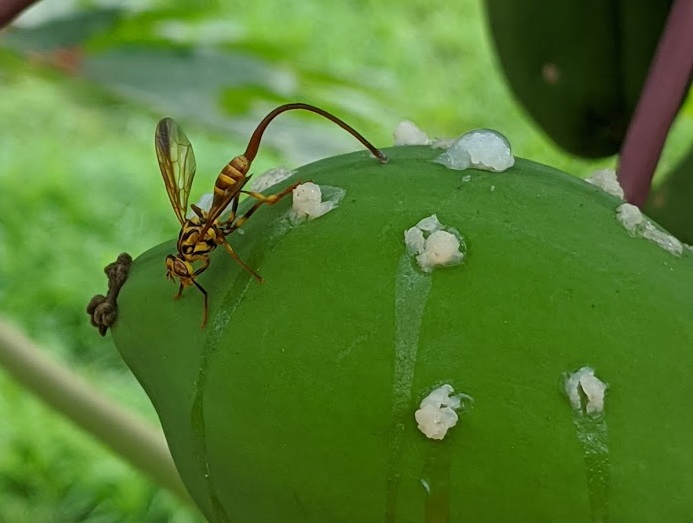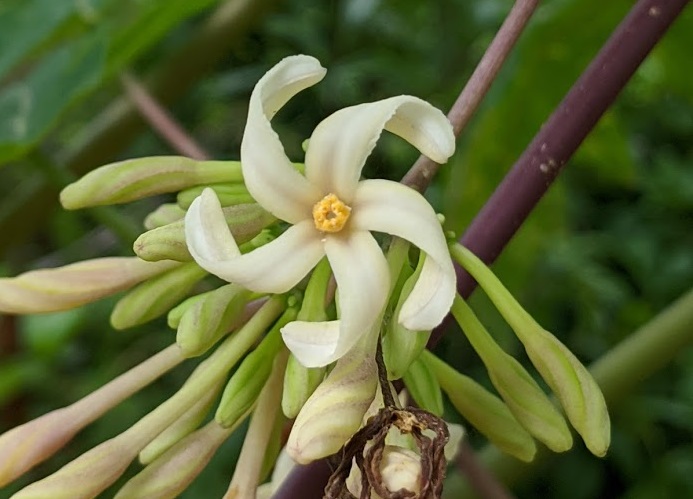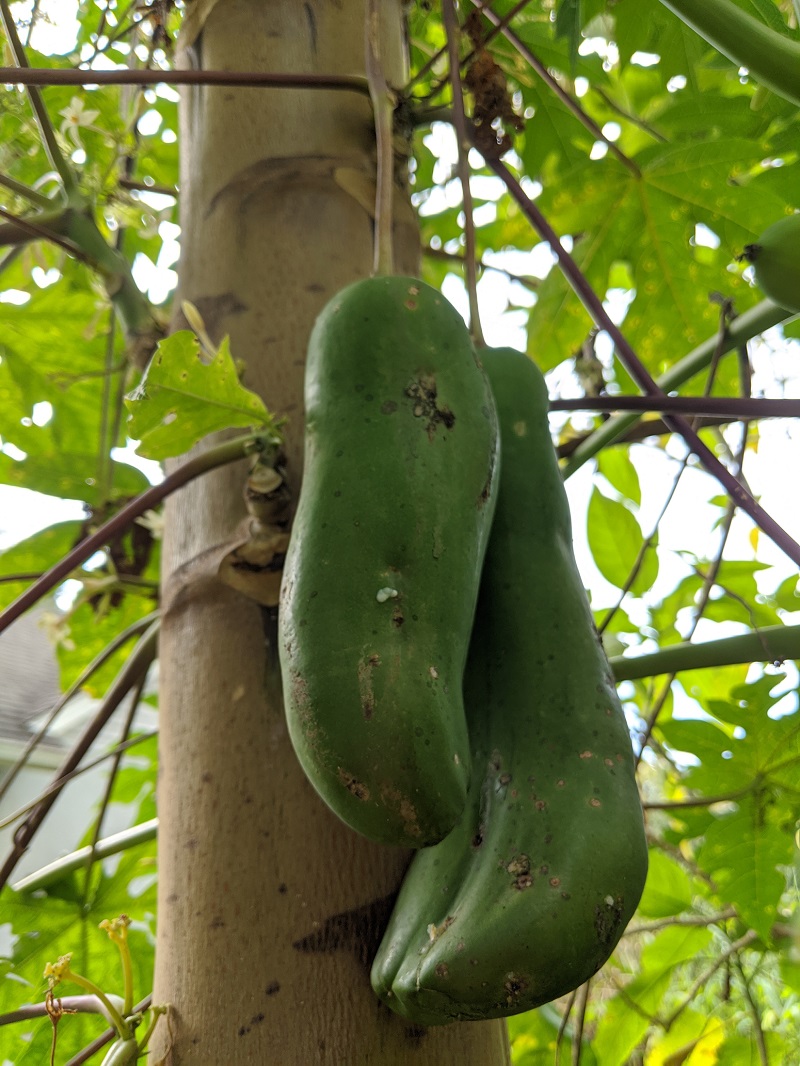
Papaya fruit production can be destroyed by this pest, the papaya fruit fly (Toxotrypana curvicauda). Papaya (Carica papaya L.) fruit has a tender skin when the fruit is young. The tenderness is perfect for the fruit fly. The female fruit fly can penetrate the skin and insert an egg into the fruit with her unusually long stinger-appearing appendage called an ovipositor.
As a result, the papaya will exude its latex sap from the injury point. The photo shows eight injury points. If the female is successful in laying her eggs inside, the larvae form of the fly, a maggot, will feed on the interior fruit surface. The fruit eventually gets a rotted, soft spot(s) or decays from the inside out. Consequently, this action prevents the fruit from reaching maturity. Papaya tree producers can use baiting traps, chemical intervention, or physical barriers (like a bag) to control the fruit fly. More information for backyard fruit tree lovers can be found at: Backyard Papayas
Papaya description

Papaya species are from Mexico and Hawaii. Papaya can have trees with flowers that are male, female or both sexes. Additionally, some trees can develop hermaphroditic flowers under harsher growing conditions. Caution! All parts of the tree contain latex which can be a skin irritant. The plant is low maintenance; it will self-prune (drop its leaves naturally.)
Cultural Requirements to Grow Papaya
To prevent rotted roots and disease pressure, plant papayas in well-draining soils with a pH range of 4.5 – 8.0. Do not plant them in flooded soil areas (think summer rains-where does the water lie). Be careful when choosing a planting location. Strong winds can cause leaf shredding, tree snapping or toppling. Each fruit weights 2-4 pounds which makes the tree top heavy.

However, make sure papayas are planted in a location that receives six hours or more of sunlight. Due to the variety of flower types, papayas self-pollinate. You can harvest the seeds and easily grow more trees for free. The fruit ripens on or off the tree. There are several diseases, like powdery mildew, and pest issues, especially fruit flies and nematodes. Lastly, make sure to water and fertilize routinely. Read more on cultural requirements here: Growing Conditions
Fun Nutritional Facts
Papaya contains papain which aids in digestion. If you overeat, chew on a few. Additionally, papain is used to tenderize meat. Next time you use a meat tenderizer, look at the ingredients and see if papain is one of them. The edible seeds have a spicy flavor somewhat reminiscent of black pepper. Dry and crush them for a spicy condiment.
In conclusion, if you want to consider growing papaya as a crop in Manatee County and have additional questions, please contact Lisa Hickey, Sustainable Food Systems Extension Agent at (941)722-4524, extension 1817. Check out the resources on our home page. Manatee Extension
 0
0
